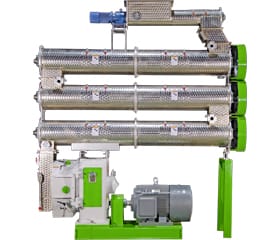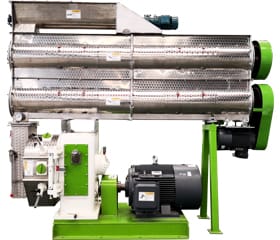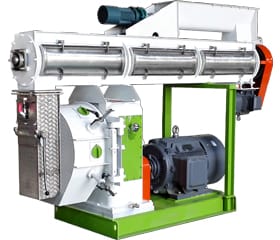Classification and working principle of screw conveyor
With the rapid economic development, the modern market has higher and higher requirements for conveying equipment. How to stand out among the many conveying equipment has become the future development direction of conveying equipment. The screw conveyor combines modern intelligence, controllability, and automation technology to make the screw conveyor more efficient and has become the object of competition for transportation companies. Next, Richi Machinery will introduce the knowledge of screw conveyor to everyone, and hope to help you!
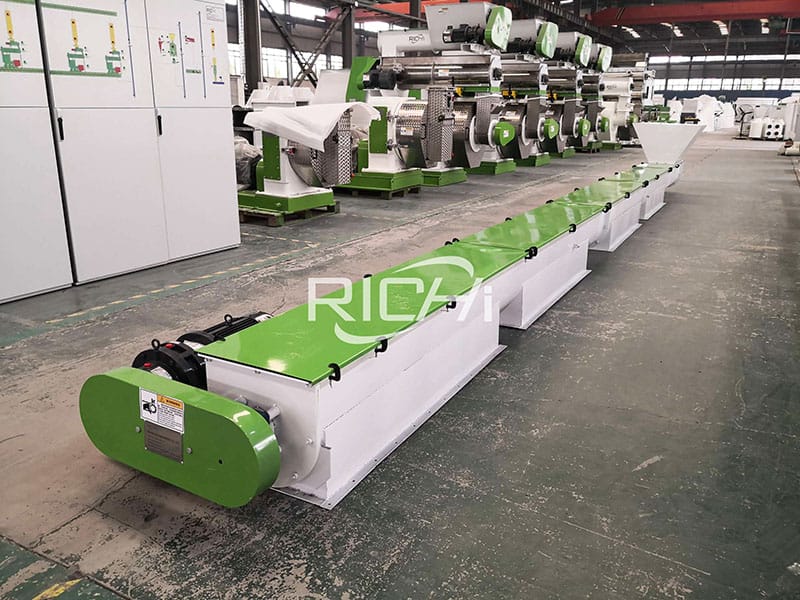
1. The definition of screw conveyor
The screw conveyor is commonly known as the auger, and the screw conveyor uses the rotating screw blade to push the material for the screw conveyor. The force that the material does not rotate with the screw conveyor blades is the material's own weight and the frictional resistance of the screw conveyor casing to the material. The spiral blade welded on the rotating shaft of the screw conveyor has solid surface, belt surface, blade surface and other types depending on the material being conveyed. The screw shaft of the screw conveyor has a thrust bearing at the end of the material movement direction to give the axial reaction force of the screw with the material. When the length of the machine is long, an intermediate suspension bearing should be added. It is a widely used conveying equipment in the mineral, feed, grain and oil, and construction industries. It is made of steel and is used to convey chemical and building materials such as powder or solid particles with higher temperature.
2. Classification of screw conveyors
Screw conveyors are divided into two types: horizontal screw conveyor and vertical screw conveyor.Screw conveyors can be divided into horizontal screw conveyors, vertical screw conveyors, bendable screw conveyors, and spiral tube (roller conveyor) conveyors according to the characteristics and structure of the conveyed materials.
(1) Vertical screw conveyor
The speed of the spiral body of the vertical screw conveyor is higher than that of the ordinary screw conveyor. Under the action of centrifugal force, the added material generates friction with the casing, which prevents the material from rotating with the spiral blade and overcomes The gravitational force of the falling material is reduced, so that the vertical conveying of the material is realized. The machine has a small conveying volume, a small conveying height, a high speed, and a large energy consumption. It is especially suitable for conveying powder and granular materials with good fluidity, mainly used for lifting materials, and the lifting height is generally not more than 8 meters.
(2) Horizontal screw conveyor
When the material is added to the fixed tank, due to the gravity of the material and the friction between the tank, the material accumulated in the lower part of the tank does not rotate with the spiral body, but only moves forward by the rotating spiral blade The movement is like a non-rotating nut moving in translation along a rotating screw to achieve the purpose of conveying materials. The machine is convenient for loading and unloading at multiple points, and can complete mixing, stirring or cooling functions at the same time during the conveying process. Sensitive to overload, easy to block; material is broken and lost, the structure of the horizontal screw conveyor is simple, easy to install, maintain and troubleshoot. It is suitable for horizontal or slightly inclined continuous and uniform conveying of loose materials, working environment temperature is -20-40℃, and conveying material temperature is -20-80℃. Its speed is lower than that of vertical conveyors. It is mainly used for conveying materials horizontally or at a small angle. The conveying distance is generally not more than 70 meters.
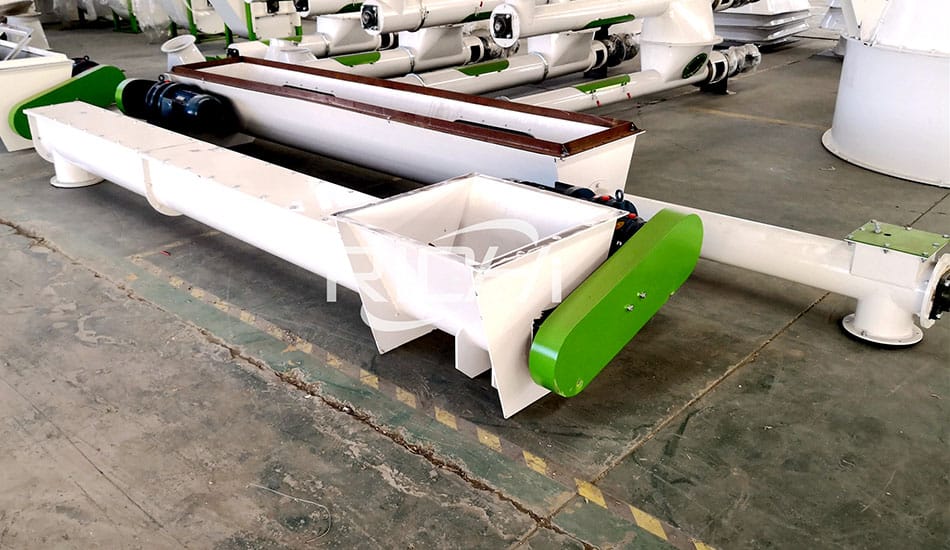
(3) Spiral tube (roller conveyor) conveyor
The spiral tube conveyor is a cylindrical casing welded with continuous spiral blades, and the casing and the spiral blades rotate together. Due to the centrifugal force and friction, the added material rotates and is lifted by the shell together, and then slides down the spiral surface under the gravity of the material, so that the material rotates with the spiral tube to realize the forward movement of the material, as if not rotating The screw moves in translation along the rotating nut to achieve the purpose of conveying materials.
The machine has low energy consumption and low maintenance costs; when feeding at the end, it can meet the requirements of uneven feeding, and can complete various process requirements such as conveying, mixing and mixing at the same time, and jamming will not occur when the material enters too much ; It is convenient for multi-point loading and unloading, and can transport materials with higher temperature. It is suitable for horizontal transportation of high-temperature materials; it has good adaptability to materials with high temperature, uneven feeding, anti-fragmentation requirements, anti-pollution requirements, and processes that require multiple points of loading and unloading. Practice has proved that it is effective in conveying materials such as cement clinker, dry limestone, phosphate rock, ilmenite powder, coal and slag.
The particle size of the material added from the end feed port should not be greater than 1/4 of the spiral diameter; the particle size of the material fed from the middle feed port should not be greater than 30 mm. To ensure that the cylinder does not deform, the feeding temperature must be controlled below 300°C. The blade and trough wear extremely severely when conveying abrasive materials, so the spiral tube conveyor is not suitable.
(4) Flexible screw conveyor
The spiral mandrel of the machine is flexible, so the transmission line can be arranged according to the space curve according to the needs. According to the different length ratios of the horizontal and vertical (large inclination) sections in the layout, the working principle is designed according to the ordinary screw conveyor or the vertical screw conveyor.
It is used in the occasions where the conveying line needs to be arbitrarily arranged according to the space curve to avoid material reloading; when too much material or hard material enters the casing, the spiral body will float freely without jamming; low noise . Mainly used to complete the horizontal and vertical transportation of materials at the same time. In vertical conveying, the speed is generally required to be higher than 1000r/min.
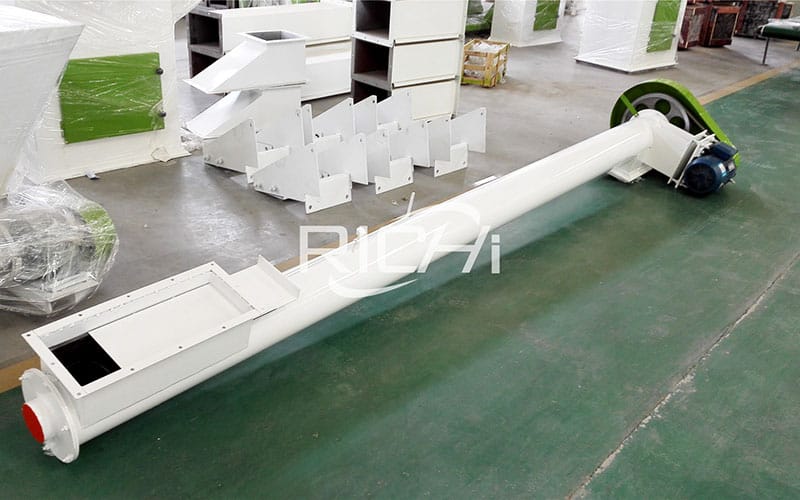
3. The working principle of screw conveyor
The working principle of the screw conveyor in conveying materials is basically divided into the following three categories:
(1) Pushing method
This type of method generally uses spiral blades to convey materials, which are often used for unloading and conveying at the bottom of the silo. The materials are often filled with spirals, and the static pressure on the particles is relatively large. The gravity of each material is much smaller than other forces ( Spiral thrust, friction, static pressure). The resistance of this kind of spiral is very large, and it has to overcome the friction formed under greater pressure. When working, the material seems to be a nut, and the screw acts like a screw. As long as the nut does not rotate (or rotates slowly), the screw can be rotated to make the nut move in the axial direction. The silo bottom discharge screw often uses a variable pitch screw , The pitch at the outlet end is larger.
(2) Centrifugal induction method
It is used for spiral conveyors with a steep vertical slope or any screw conveyor with a higher speed. Its working characteristic is that the filling amount of materials is between two types. Under the high speed of the screw, loose materials The effect of centrifugal force is far greater than that of other external forces such as gravity.
(3) Gravity sliding down method
The speed of the screw is low, and the material on the screw surface is affected by gravity far more than the centrifugal force. Because the rotating material of the screw continues to slide down the spiral surface, the axial displacement occurs. The CX screw machine basically belongs to This principle. The filling factor value of the screw machine based on this principle is generally less than 0.5. Because of overfilling, the material does not slide down along the spiral surface, but is agitated by the spiral to make it fall over the spiral shaft, and a large axial velocity cannot be obtained. Since the slow-speed spiral material is greatly affected by gravity, obviously it cannot be used for vertical spiral or upward transportation with a large inclination angle.
The principle of sliding down method, although the conveying capacity is low, the material is in a state of loose and free rolling, and is less squeezed. It is suitable for materials that are easy to agglomerate and have high abrasiveness. When the standard spiral is used, it can not only maintain a faster sliding speed, but also has a certain adaptability to inclined conveying (the inclination angle is generally within 20°).
4. Maintenance of screw conveying equipment
Since the structure of the screw conveyor is composed of the screw shell part, the driving part and the bracket part, when we carry out the maintenance and maintenance of the screw conveyor, the maintenance should be divided into parts. Maintenance of the shell part of the screw part of the screw conveyor, because the shell is generally not damaged, if there are materials in the acid-base corrosive substance, you should pay attention to cleaning the shell of the conveyor when it is shut down. The driving part of the screw conveyor is mainly composed of two parts of each motor of the reducer, and the models that need to be oiled must be replaced strictly and regularly, which is equivalent to the heart of the conveying equipment, so the oil must be replaced regularly in time .
The main spiral part of the screw conveyor, the spiral sleeve is a combination of the spiral core tube and the spiral blade. The spiral blade is also a vulnerable part. The service life is different according to the sharpness of the material. When the spiral blade and the spiral shell The gap between the body parts is large, or the blades need to be changed when they are deformed, otherwise the conveying capacity of the material will be affected. The spiral core tube part of the screw conveyor is mainly concerned with the transmission shaft and connecting shaft connected to it, and regular oil injection to ensure lubrication. Observe the thickness of the spiral sleeve. The spiral sleeve is most likely to be thinned by friction when the equipment is working for a long time. If it is thin enough, it will affect the concentricity of the spiral shaft. Spare parts should be kept and replaced in time. The inlet and outlet of the material mainly observe whether the bolts at the flange connection are tight, whether there is rust, and deal with it in time.
Finally, when inspecting the drive bracket, because the drive part is connected to other parts by the drive shaft, we need to regularly check the fastening of the drive bracket to prevent the drive part and the spiral part from being misaligned.
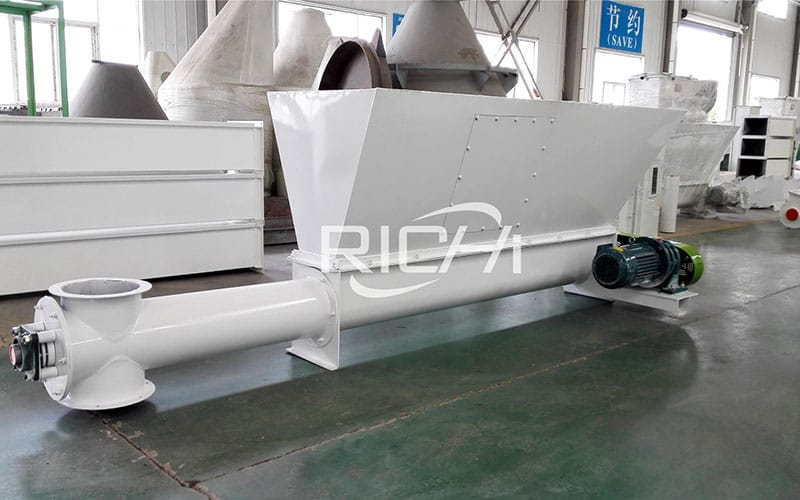
5. How to choose a screw conveyor?
Screw conveyor can meet the needs of multiple materials, especially powdery materials. It has the characteristics of good overall rigidity, stable operation, reliable sealing and easy alignment. Its conveying principle is mainly to use the spiral blades in the screw conveyor to move along The screw conveyor is moved inside the casing for conveying work. The rotation direction of the screw conveyor shaft also determines the conveying direction of the material. Because the screw conveyor can carry out bidirectional conveying, we must first determine the rotation direction of the screw shaft when operating, and then put the material for conveying.
Before manufacturing conveying machinery products, we must consider many factors, including manufacturing materials, technology, etc.; among them, the choice of materials is very important. The choice of materials not only determines the quality of the machinery, but also the price. Floating; the screw conveyor is generally made of steel, and the screw shaft is often made of steel pipe. What are the reasons for using these materials to manufacture the screw conveyor? Next, Richi Machinery will analyze it for everyone.
In the market and manufacturers, we have learned that the screw shaft of the screw conveyor is basically made of steel pipe. This is because the hollow shaft and the solid shaft of the same diameter can withstand the same torque, but The hollow shaft is light in weight, saves materials, and is easy to connect and install. If a steel pipe with a wall thickness of 5 mm is compared with a 50 round steel of the same diameter, the weight is about 64% lighter. The two ends of the screw shaft are inserted into the pre-manufactured solid shaft head, the insertion length should not be less than 120 mm, and then a sleeve with a length of about 140 mm is placed on the outer sleeve of the steel pipe. The three should be tightly joined, and finally tightened with bolts; the solid shaft head can be made of 45 steel as required.
In the manufacture of screw conveyors, sometimes due to the particularity of the conveying materials, stainless steel is also used for manufacturing. Compared with ordinary steel, stainless steel has obvious advantages. In terms of ensuring the cleanliness and viscosity of the conveyed materials, There are outstanding advantages; and the biggest disadvantage of this material is the price, and the expensive price is that this kind of material cannot be popularized and applied.
In the process of choosing a manufacturing conveyor, you should choose the appropriate screw conveyor model and material according to the characteristics of the material you are transporting. You cannot choose a material that is not suitable for your own use because of the high price, and you cannot pursue large transportation. Regardless of the actual quantity, it will cause waste; when choosing a screw conveyor, it can meet the production needs of the enterprise.
The spiral blade form is determined according to the nature of the conveyed material. When conveying materials with good scattering properties such as wheat and rice, full-face blades should be used; when conveying oily materials with high viscosity and easy adhesion, belt blades should be used to prevent clogging. It should be noted that for conveying raw grains and rice and other materials, in order to prevent the materials from being broken, screw conveyors are generally not used.
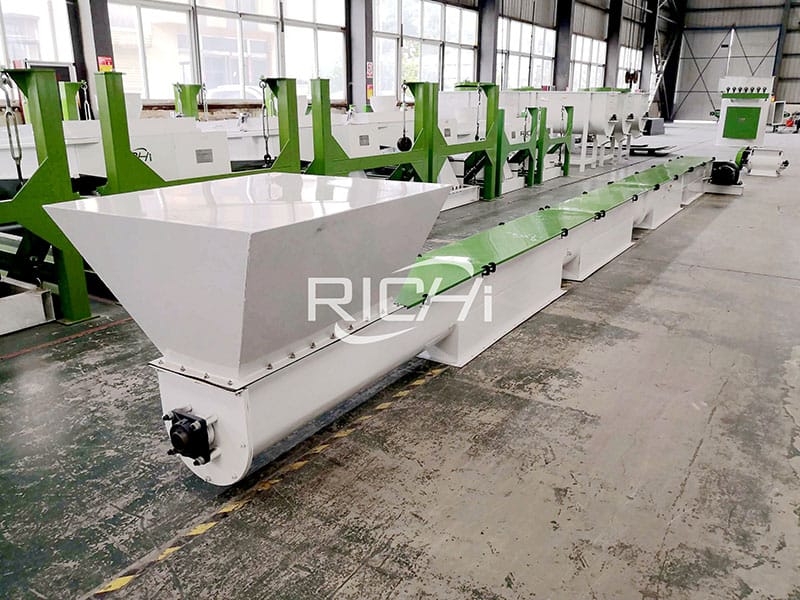
6. Description of the tensioning device of the screw conveyor
The screw conveyor tensioning device is composed of bearings, screws, nuts and guides. Rotating the spider rod can make the bearing move along the guide rail, and the screw may not be fixed on the bearing seat. The screw can work under compression, and it can also work under tension (it works better under tension). The latter is much longer than the former in terms of length. With spiral tensioning containers, the tension of the rubber belt changes during the working process. As the rubber belt stretches, the tension gradually decreases, so it must be checked and adjusted regularly. It is not easy to adjust the mountain manually, so it is inevitable that the initial tension will be too large and too small. Therefore, it can only be applied to the simple and relatively short belt conveyor that is used on the unloading machine and the loading machine.
The diameter of the driving roller of the belt screw conveyor is generally and larger than the diameter of the tension roller. The reason for this selection is that the tension change of the rubber belt on the driving drum is relatively large. If the diameter of the drum should be larger, the length of the corresponding drum circle is also the principal, so that the rubber belt is wound around the side In the process of transitioning to the edge out, the deformation per unit length is small, which is beneficial to improve the service life of the rubber belt.
The belt conveyor on the unloading machine usually has low power and low humidity in the ring stack. Therefore, the smooth roller can meet the sawing requirements of the work. In the wet environment, the power is large and easy to slip. Rubber roller should be used. The towel-pot roller has a good quality and a thick layer and is resistant to friction. If the production conditions permit, this roller should be used as much as possible. Although the rubber-coated roller has a short service life, it is easy to maintain.
7.Introduction of RICHI screw conveyor for sale
TLSS series horizontal screw conveyor is a fixed mechanical equipment.Suitable for feed pellet or feed powder material of grain,oilseed and feed with horizontal conveying or approaching horizontal, angle <20°= sloping conveying, the conveying length is normally up to 40 meters. The suspension shaft uses brasses or machine tool oil-impregnated bearing,easy and simplified lubrication. All use steel punching except walled bearing support,saving labour and material.The exit walled bearing base with simple isolation dust structure is safe and reliable.The screw has many turning forms like left turning and right turning. The inlet and exit of walled bearing support may be interchanged,more flexible in technique.TLSS-32、TLSS40 use bolt to connect tube shaft,disassemble or assemble screw shaft, no need to disassemble bearings, convenient maintenance.
Technical datas:
| Type Model | Output(t/h) |
| TLSS12 | |
| TLSS16 | 1-5 |
| TLSS18 | 3-6 |
| TLSS20 | 7-9 |
| TLSS25 | 10-12 |
| TLSS28 | |
| TLSS32 | 10-25 |
| TLSS40 | 30-50 |
| TLSS50 |
If you want to built one complete pellet production line in your country, pls send the inquiry to us. We will customized design according to your requirement.

